The 2032 Brisbane Olympics may still be a decade away but a raft of development and infrastructure projects are ready to break ground following planning discussions between the Brisbane City Council and the International Olympics Committee.
As many as 14 new sports venues in Brisbane, seven on the Gold Coast and five on the Sunshine Coast were proposed as part of Brisbane’s original Olympic bid.
Brisbane’s new venues includes the $1-billion redevelopment of the existing cricket stadium in Woolloongabba to serve as the main stadium, hosting the opening and closing ceremonies as well as athletics.
New stadiums will be constructed, including the 17,000-capacity inner-city Brisbane Arena, first mooted in 2018, to host swimming in a temporary pool, and the Brisbane Indoor Sports Centre to host basketball.
The International Olympic Committee said that about 80 to 90 per cent of the “advanced games concept” venues needed for the 2032 games already existed in Brisbane or would be completed by 2032.
The successful bid makes Brisbane the smallest city by population to host the summer games since Montreal in 1976.
Queensland’s tourism sector will be one of the key beneficiaries, a sector significantly impacted by the pandemic due to international border closures and intermittent domestic border restrictions, with up to 130,000 direct jobs anticipated to be created.
Overall, it will cost almost $7 billion to run the games, which will be privately funded.
OLYMPIC VENUES
There will be more than 30 venues, excluding preliminary final venues, for the Games between July 23 and August 8, 2032.
Brisbane: 21 Venues
• The Gabba (rebuild, 50,000 capacity) Athletics, Opening and Closing Ceremonies
• Brisbane Arena (new, 15,000) Swimming, Water Polo
• Brisbane Aquatic Centre (existing, 4300) Diving, Water Polo
• South Bank Culture Forecourt (temporary, 4000) Archery
• Brisbane Indoor Sports Centre (new, 12,000) Basketball
• South Bank Piazza (existing, 4500) 3x3 Basketball
• Anna Meares Velodrome (existing, 5000) Cycling
• Victoria Park (temporary, 5000/25,000) Freestyle BMX, Equestrian
• Brisbane Showgrounds (existing, 15,000) Equestrian
• Suncorp Stadium (existing, 52,500) Rugby Sevens, Football (Finals)
• Chandler Indoor Sports Centre (rebuild, 10,000) Gymnastics
• Ballymore Stadium (upgrade, 10,000) Hockey
• Brisbane International Shooting Centre (existing, 2000) Shooting
• Brisbane Convention Centre (existing, 6500) Table Tennis, Fencing, Taekwondo, Badminton
• Redland Whitewater Centre (new, 8000) Slalom Canoe
• Brisbane Entertainment Centre (existing, 11,000) Handball
• Moreton Bay Indoor Sports Centre (new, 7000) Boxing
• Ipswich Stadium (under construction, 10,000) Modern pentathlon
• Lake Wyaralong (existing, 14,000) Rowing, Sprint Canoe
• Royal Queensland Golf Club (existing, 15,000) Golf
• Royal Queensland Yacht Squadron (existing, 10,000) Sailing
• Queensland Tennis Centre (existing, 6000) Tennis
Gold Coast: 6 venues
• Broadbeach Park Stadium (temporary, 12,000) Beach Volleyball
• Cbus Super Stadium, Gold Coast (existing, 27,400) Football
• Gold Coast Leisure Centre (existing, 7500) Judo, Wrestling
• Broadwater Parklands (temporary 5,000) Triathlon
• Coomera Indoor Sports Centre (existing, 11,000) Volleyball
• Gold Coast Convention Centre (existing, 6,000) Weightlifting
Sunshine Coast: 3 venues
• Sunshine Coast Stadium (upgrade, 16,500) Football
• Sunshine Coast Indoor Sports Centre (new, 6000) Basketball
• Alexandra Headland (temporary, 5000) Road Cycling, Race Walking, Kiteboarding, Keelboat Sailing
• Sunshine Coast Mountain Bike Park (existing, 10,000) Mountain Biking
OLYMPIC STADIUM
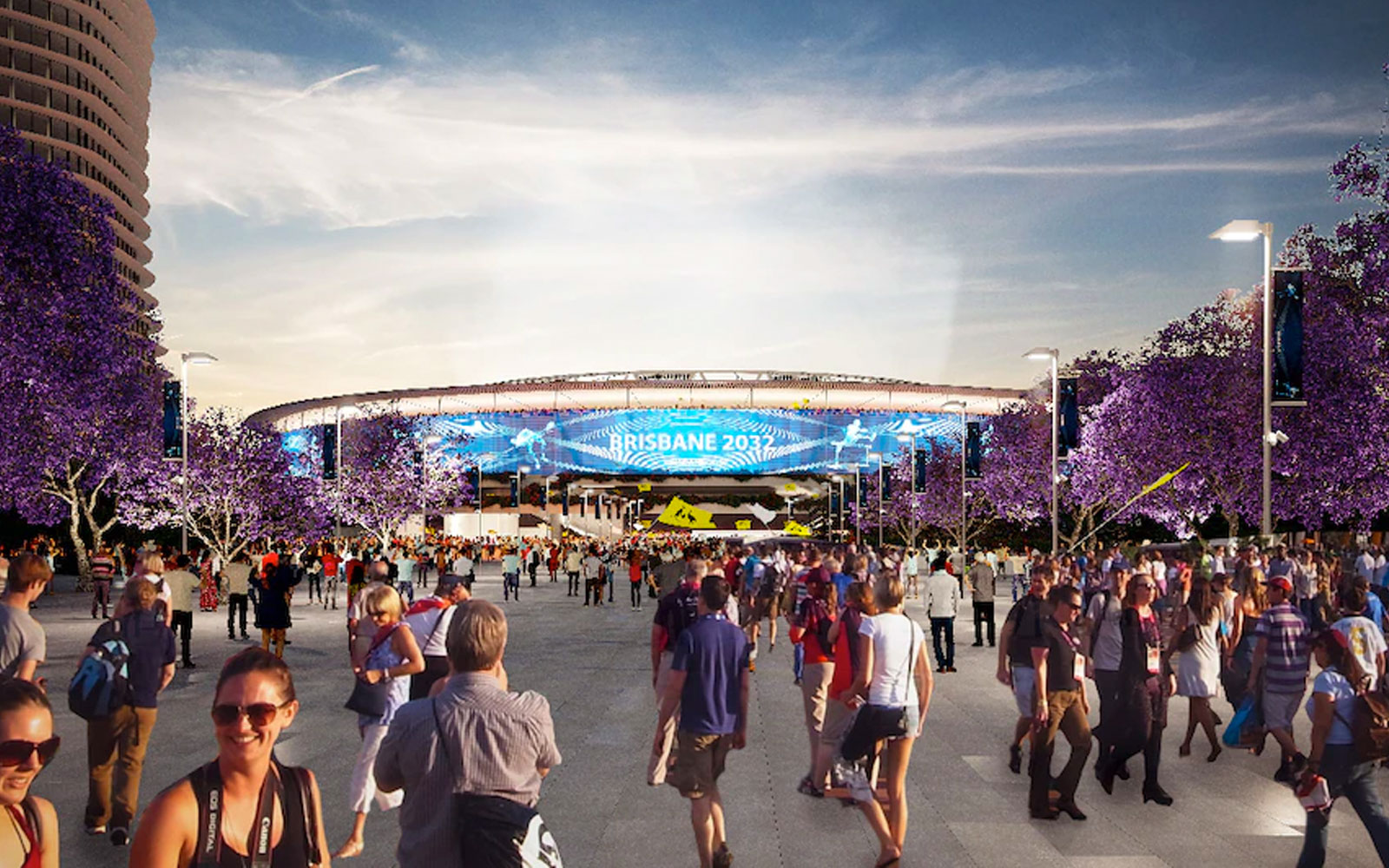
Fondly known as the Gabba, the first stadium was built on the site in 1895 and has undergone two substantial renovations and refurbishments since 1993.
The last major redevelopment was completed in 2005 when a 24-bay grandstand was built for $128 million.
Long-overdue renovation plans for Queensland’s historic sports stadium which were drawn up in 2017.
The stadium is surrounded by some of Brisbane’s busiest arterial roads, leading to large crowds of pedestrians having to wait at multiple sets of traffic lights.
It has also been long criticised for its lacking “sense of arrival” or “defined front door”.
In August 2018, the state government committed $100 million to rectify land surrounding the stadium to activate public space while connecting pedestrians with existing and future transit infrastructure.
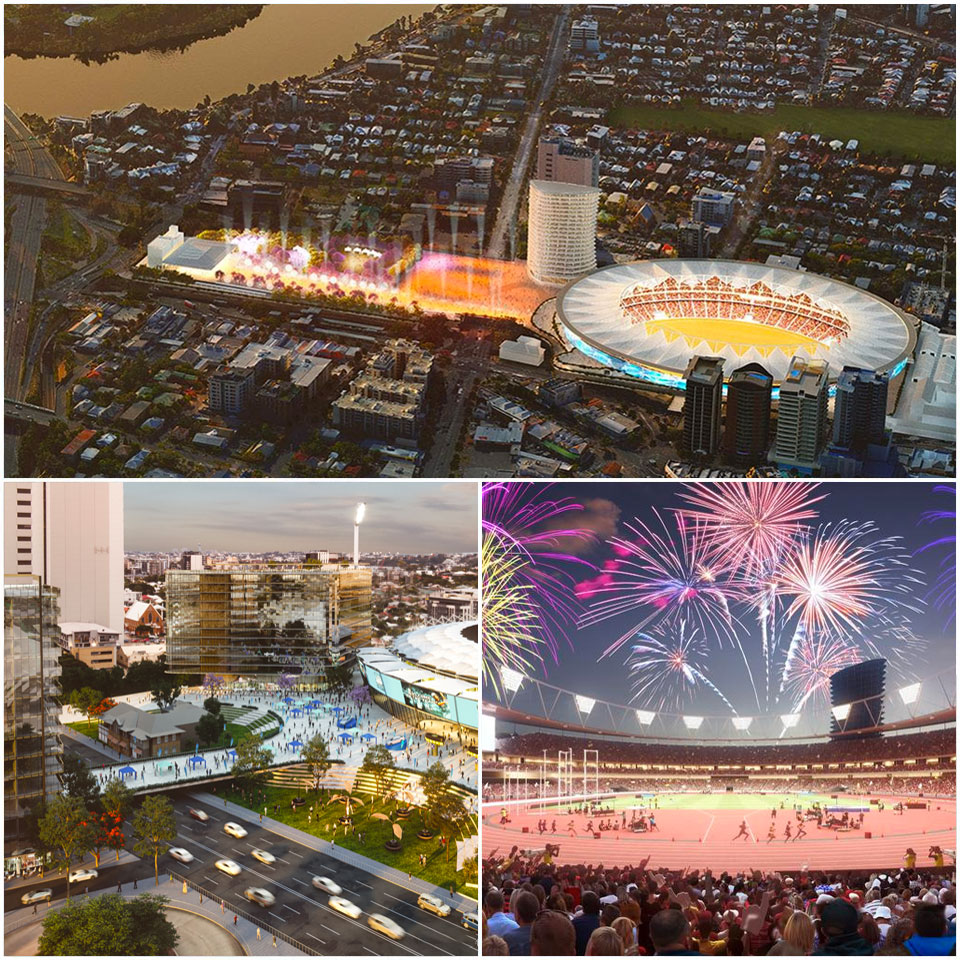
▲ An artist's impression of how the Gabba could look after redevelopment.
It will now be upgraded to increase capacity from 42,000 to 50,000 spectators as part of a forthcoming redevelopment at a cost of $1 billion.
The upgrade will include a new pedestrian plaza, across Main Street, linking the stadium to Woolloongabba’s new Cross River Rail station, which is currently under construction and a significant forecourt and concourse surrounding the stadium.
The western end would be revamped as the major entry point, with an elevated podium hugging the entire western side of the stadium at level three.
The stadium will also be wrapped in a new “media halo”—a combination of digital projection and lighting that will run around the facade.
Inside, some of the key upgrades will include new 16m x 9m video boards at each end suspended above a premium standing area, a major upgrade to corporate boxes and function rooms.
The underside of the stadium’s roof could also be wrapped in a 360-degree media halo.
ATHLETES VILLAGES

Northshore Hamilton is firming to host a 14,000-bed athletes village for the Games.
The state government has long identified Hamilton Northshore as a Priority Development Area.
The village will host more than 10,000 athletes and team officials for the Olympic Games and more than 5000 for the Paralympics.
The site, 6km from the Brisbane CBD, was identified in documents from the IOC, praising its prime waterfront location, proximity to the CBD, competition and training venues, and transport connections.
The Brisbane City Council recently finished a $650-million upgrade to Kingsford Smith Drive, increasing connectivity to the site, and it is near the dual Gateway Bridges, providing easy links to Gold and Sunshine coast venues.
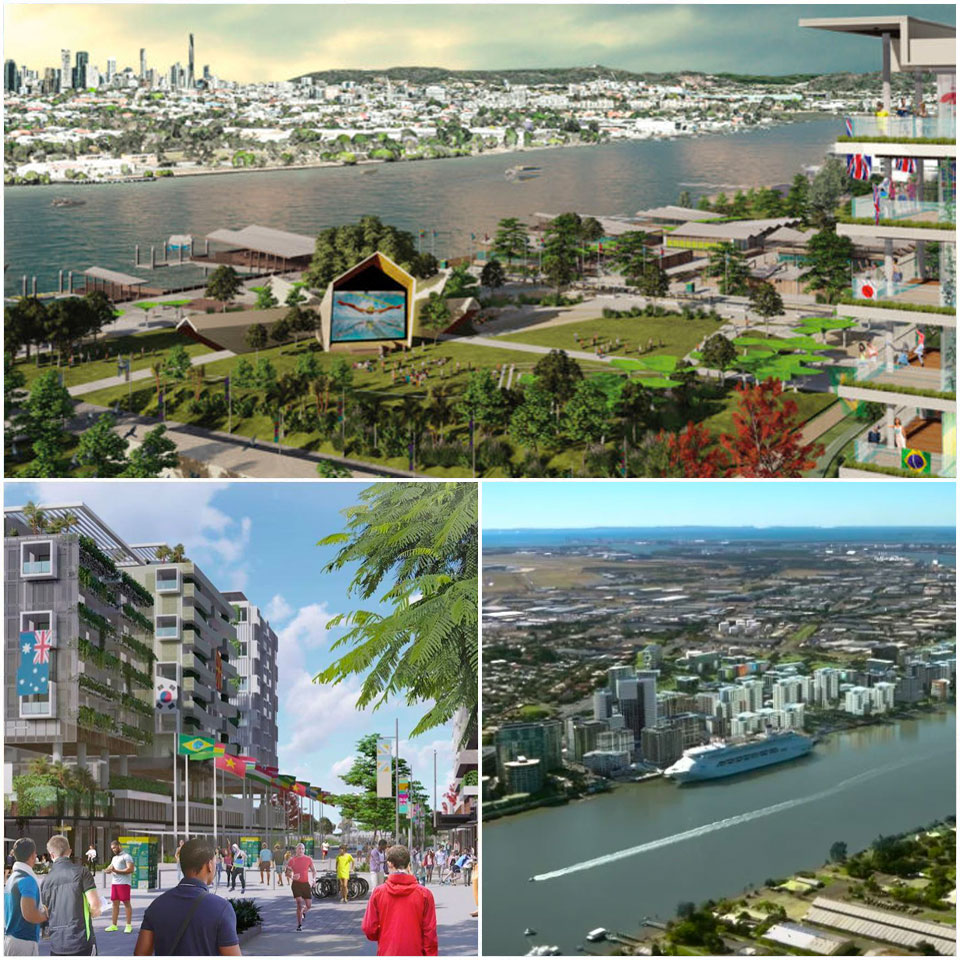
▲ The development scheme for the Northshore Hamilton PDA is in the final stages of review and will be released for public comment later this year.
For the next few years, Hamilton Northshore’s 50ha of government-owned riverfront land will be boosted with a number of commercial and residential developments to prepare the precinct once the international guests arrive.
According to the IOC's feasibility assessment for Brisbane, there could potentially be two athletes villages—one in Brisbane and one on the Gold Coast—as well as a day village on the Sunshine Coast.
The Gold Coast will contribute 2000 beds with existing hotels in Surfers Paradise, as well as other hotels on the Gold Coast for team officials.
Like the athletes village developed at Southport on the Gold Coast for the 2018 Commonwealth Games, the Hamilton athletes village could be repurposed after the Games as a mix of private and public housing.
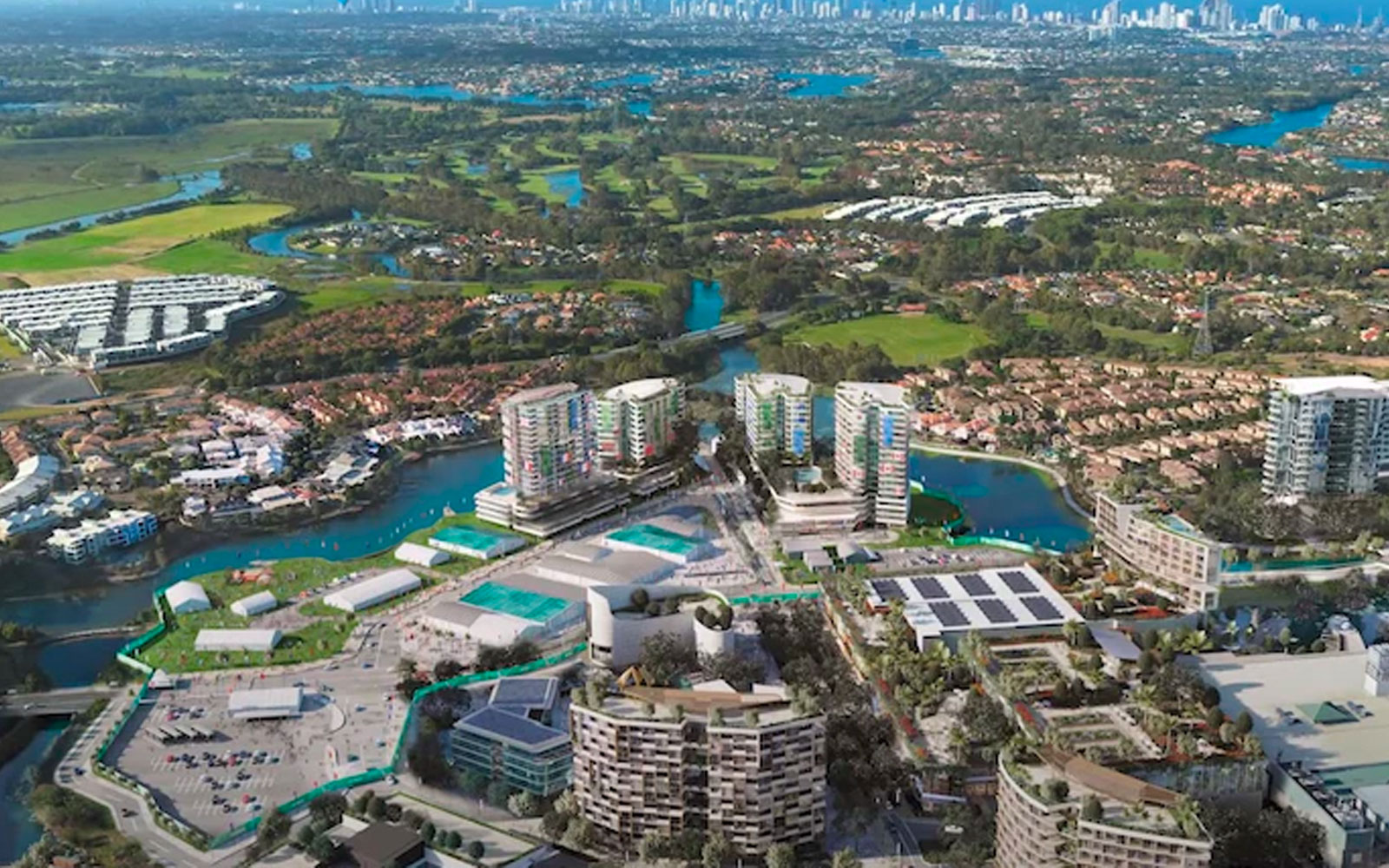
▲ An artist's impression of a proposed Olympic village at Robina for the Brisbane Olympics in 2032.
It eventually could offer a diverse residential offering, including aged care, retirement living, social and affordable housing, key worker, hotel, build-to-rent and market accommodation.
Economic Development Queensland recently awarded a $14-million package of works to BMD Constructions to construct three new roads and upgrade two others with associated services and landscaping at the eastern end of Northshore.
Robina will be the location for the second athletes village housing up to 2600 athletes and officials in a new residential development.
The region would host events including aquatics, beach volleyball, golf, judo, triathlon, volleyball, weightlifting and wrestling.
The village’s Collyer Quays site is only two minutes from Cbus Super Stadium, where football games will be held.
It’s also close to all other proposed Olympic venue on the Gold Coast except the Coomera Indoor Sports Centre.
BRISBANE ARENA
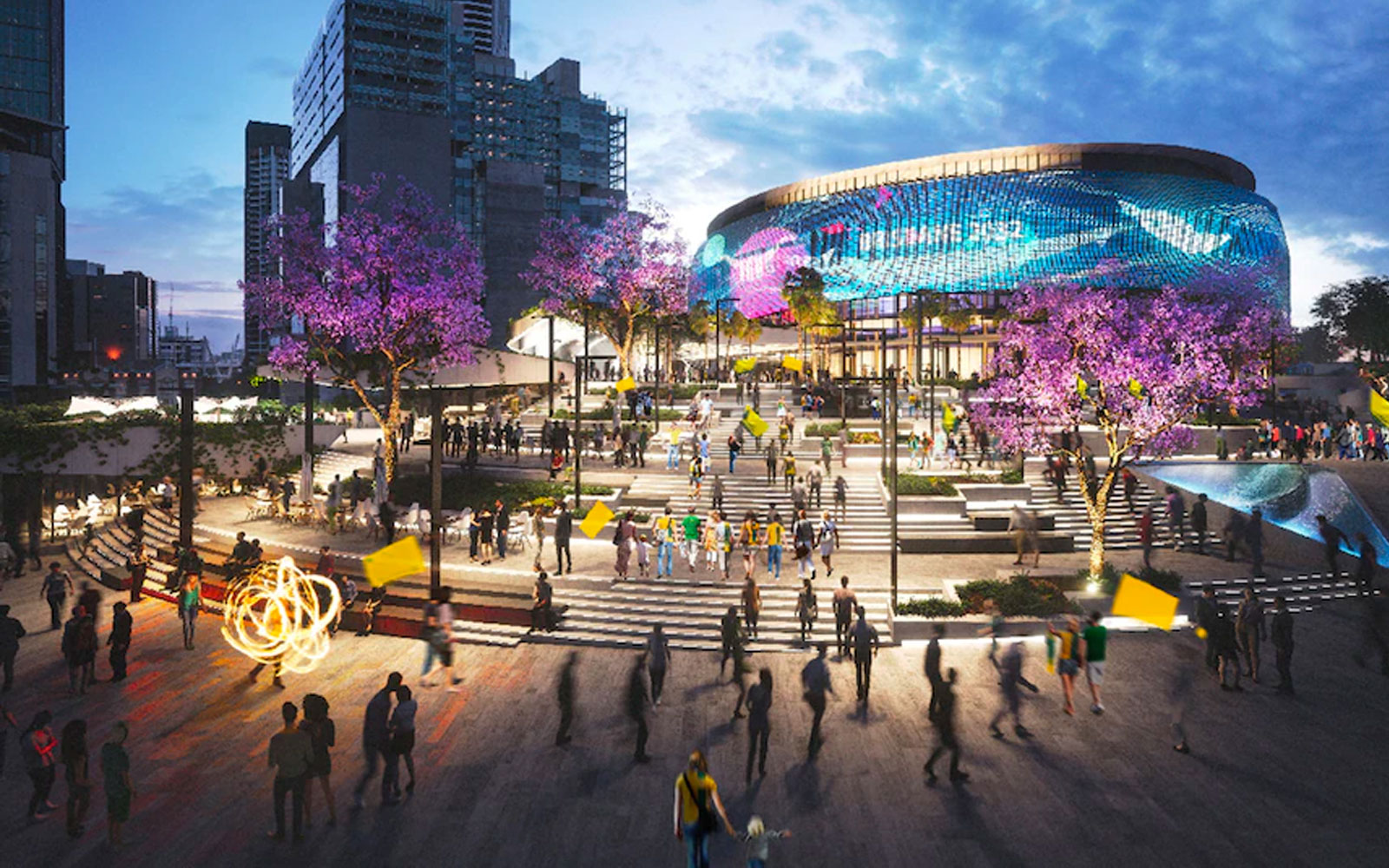
In early August, plans for the Roma Street Cross River Rail Priority Development Area, above the new Roma Street underground train station, were approved to include a new indoor arena to host swimming and water polo.
It was originally pitched as the Brisbane Live arena, a 17,000-seat entertainment venue pegged for Brisbane’s CBD by music entrepreneur Harvey Lister’s company ASM Global, which operates the ageing Brisbane Entertainment Centre at Boondall.
The Roma Street Cross River Rail PDA covers about 32ha as a gateway to the city centre.
An additional 2ha of public space will be added to the Roma Street Parklands along with new residential buildings along Parkland Boulevard, which would include a mix of social and affordable housing.
Cycling and pedestrian paths would connect to the Olympic indoor arena next to the heritage former Roma Street Railway Station, which has been earmarked for adaptive reuse.
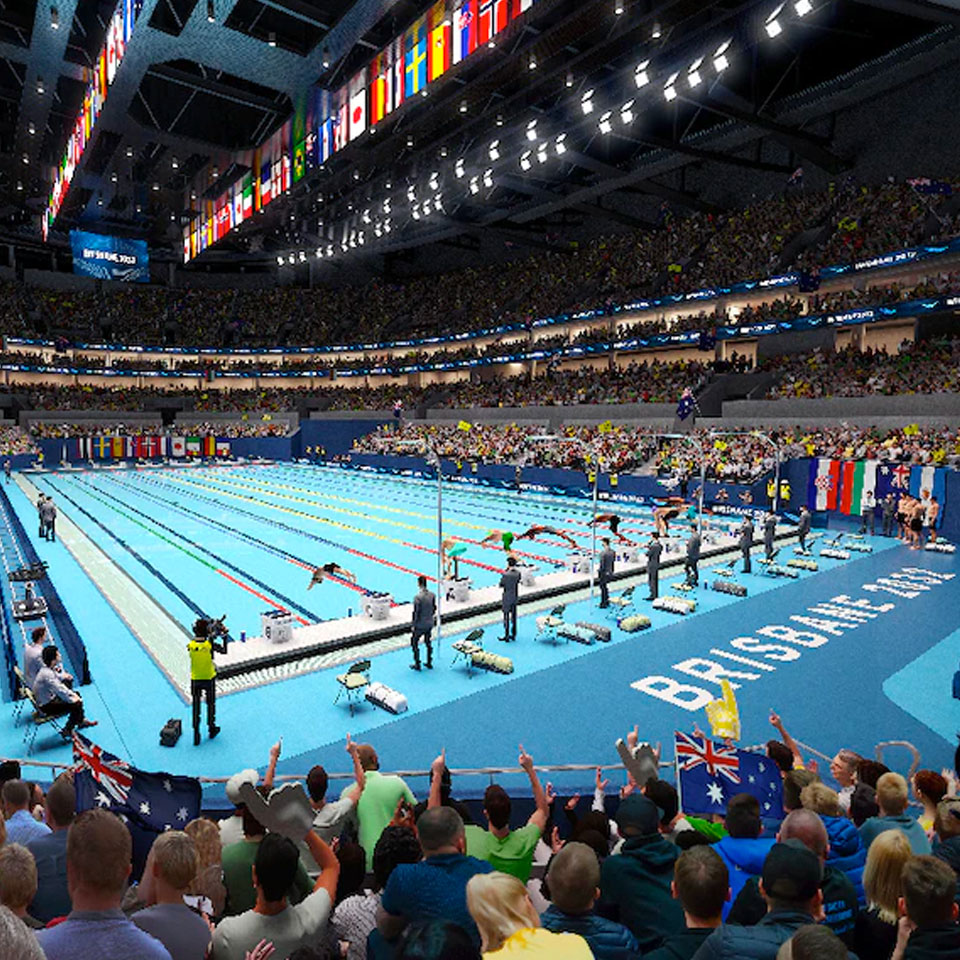
▲ Artist’s impression of the proposed aquatic centre in Brisbane’s CBD.
It also includes provisions for a new public plaza beside the new Cross River Rail station building.
Two rival bidders will vie for the right to build the arena, expected to be completed by 2024.
The new arena would also have outward-facing retail opportunities on the Roma Street frontage as well as a ‘Sky Lounge’ which operates as a function space during non-event times.
The new arena will host swimming and waterpolo with the construction of a temporary pool which would be dismantled following the Olympics.
The venue would have the ability to host basketball, netball and other indoor sports.
BRISBANE INDOOR SPORTS CENTRE
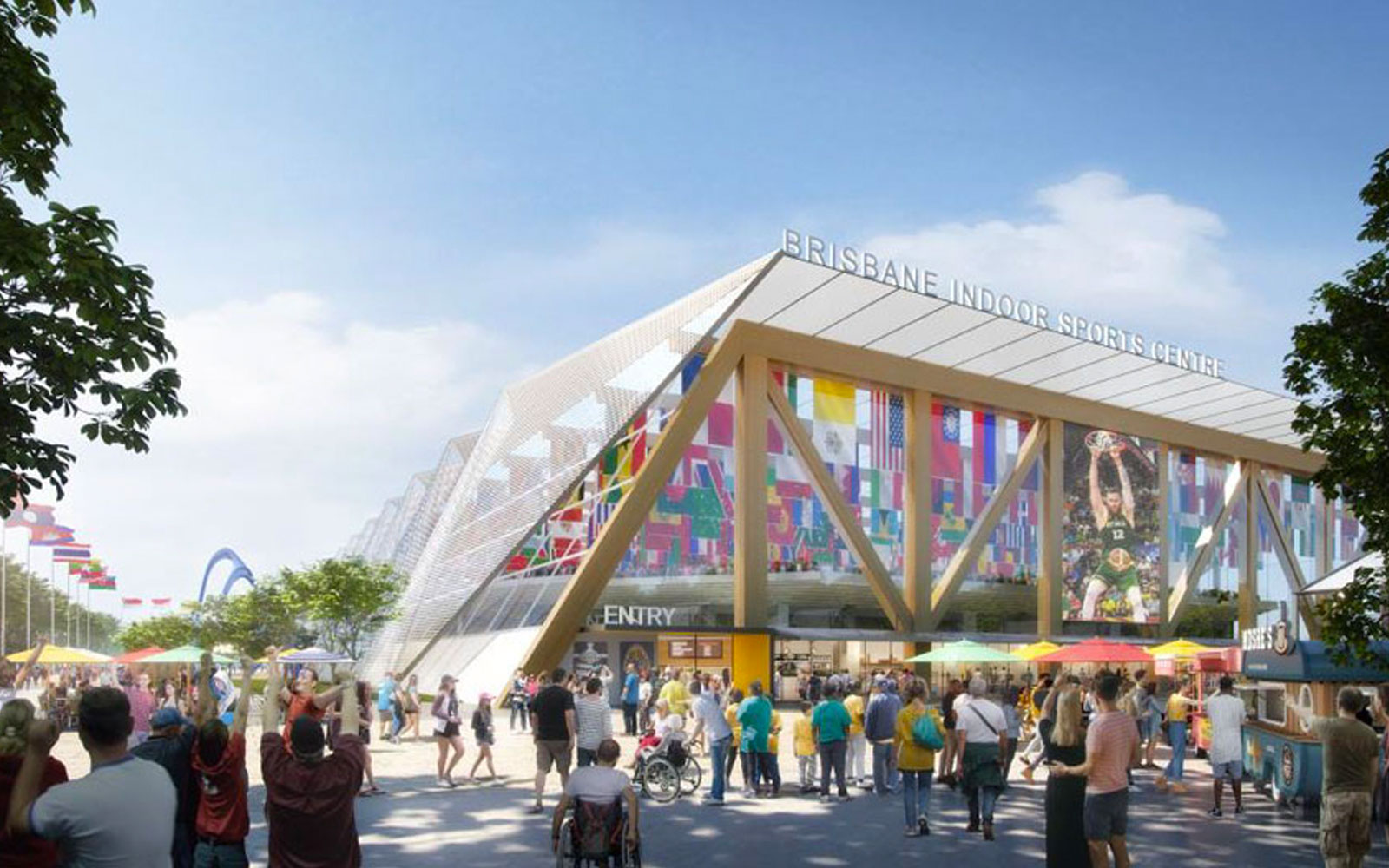
The Brisbane Indoor Sports Centre forms part of Brisbane's bid to host the 2032 Olympic Games.
The new venue will be located in or near the inner Brisbane suburb of Herston or Albion, just north of the CBD, not far from the Brisbane showgrounds, Ballymore and Victoria Park located nearby.
The facility will host basketball during the Games, with a seating capacity of 12,000.While little is known about this venue, following the Games it'll be a 12 court facility and a community sports hub.
Therefore, it appears it'll be a similar facility to the Gold Coast Sports and Leisure Centre and the Coomera Indoor Sports Centre, both used for the 2018 Commonwealth Games, with temporary grandstands used to create a show court.
CHANDLER ARENA AND BRISBANE AQUATIC CENTRE
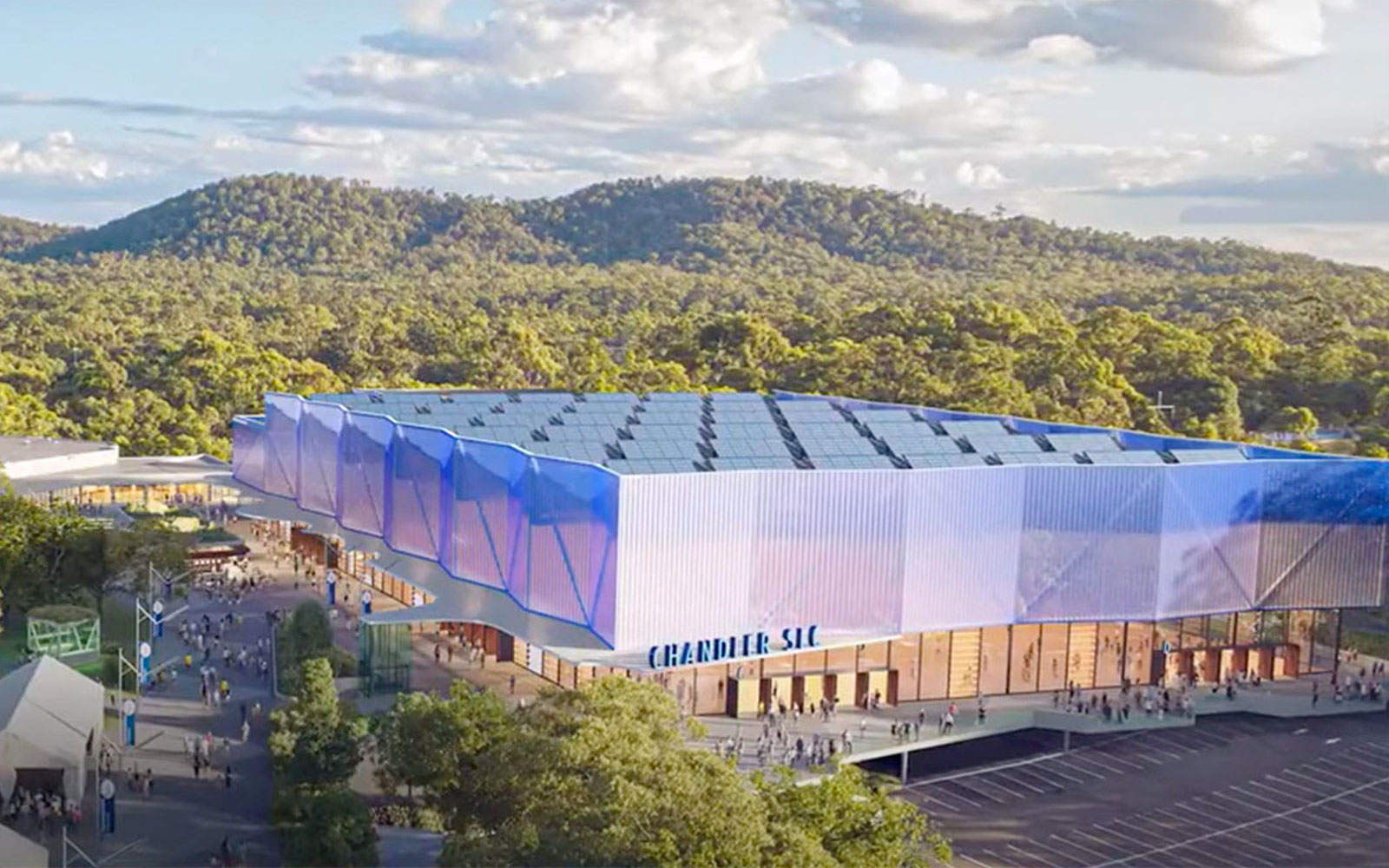
Chandler Arena is an indoor arena located at the Sleeman Sports Complex in Brisbane.
Formerly known as the Sleeman Sports Centre, the arena was built for the 1982 Brisbane Commonwealth Games and has a seating capacity of 2700.It can host a range of sports including basketball and netball, and is the previous home venue of the Brisbane Bullets and Queensland Firebirds.
As part of Brisbane's bid to host the Games, it was proposed the Chandler Arena be replaced a new 10,000-capacity Chandler Indoor Sports Centre.
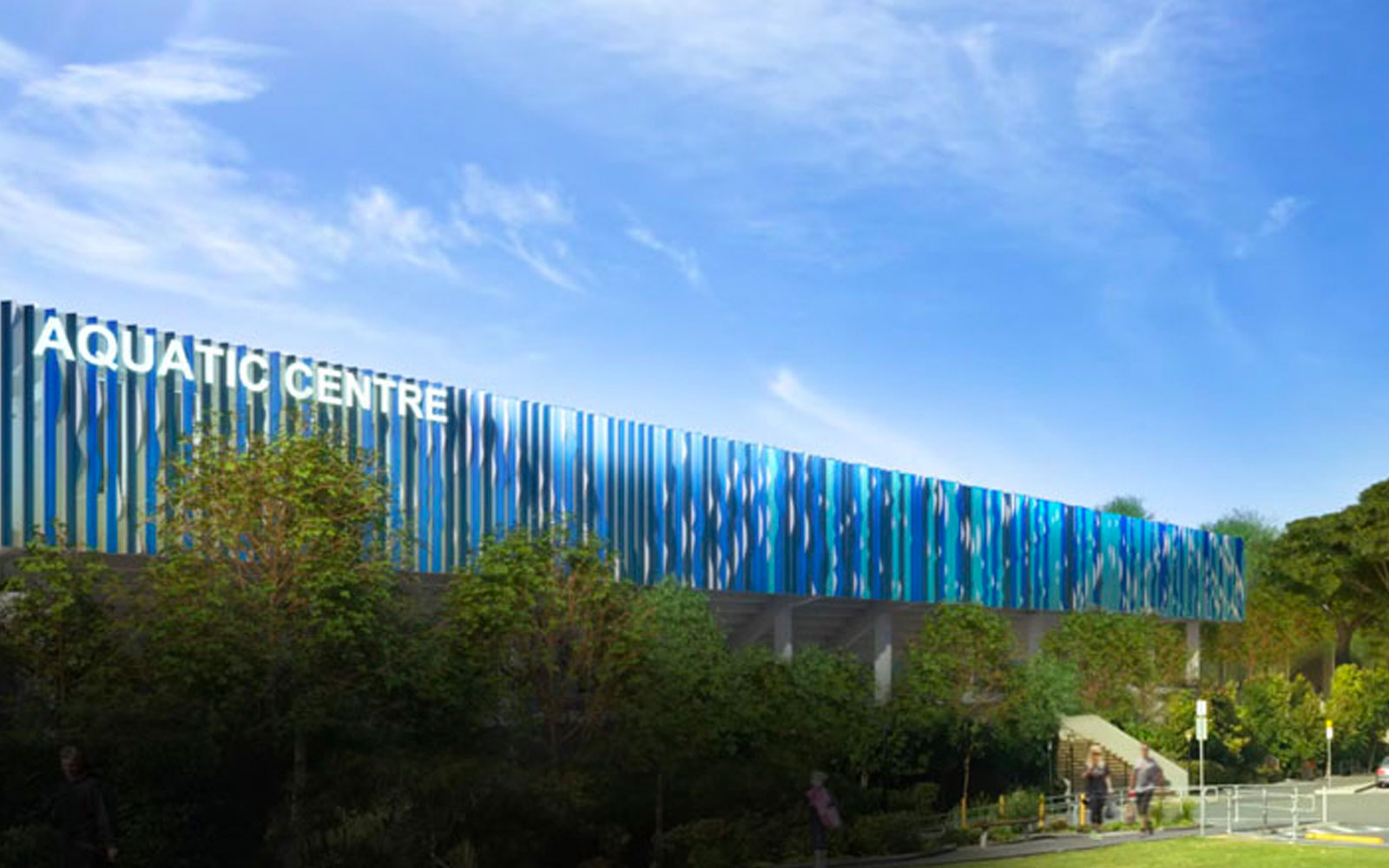
The Brisbane Aquatic Centre is being redevelopment into a world-class indoor swimming centre.
Part of the Sleeman Sports Complex, the aquatic centre consists of four main swimming pools—a 50m indoor Olympic pool, a 50m outdoor Olympic pool, a 25m diving pool and a 25m lap pool.
The centre has grandstand seating for 4300 spectators in two tiers on either side of the indoor pool.
Previously known as the Chandler Aquatic Centre, the venue has hosted numerous high-profile events including the 1982 Commonwealth Games and 2001 Goodwill Games.
International Broadcasting Centre
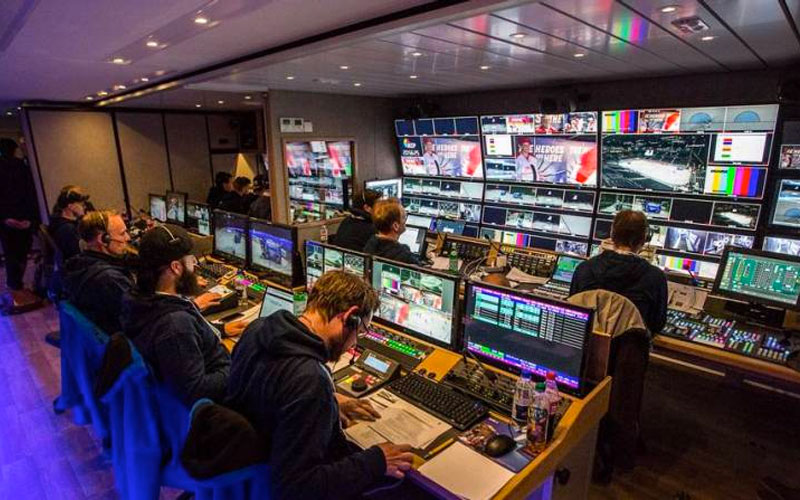
In July, Brisbane lord mayor Adrian Schrinner confirmed a new precinct was being planned on a major 7ha site on Montague Road in South Brisbane, bordering West End.
The site will be purchased for the Games to house the International Broadcast Centre for the event. After the Games the centre will be converted to parkland.
The venue—where the world’s media will converge during the Games—is expected to be about 60,000sq m and would be within walking distance of the Brisbane Convention and Exhibition Centre.
The industrial land at South Brisbane, occupied by the Parmalat milk factory, was earmarked in Brisbane City Council planning in 2014 for future urban and cultural development.
The council confirmed that negotiations with the owner of the business on the site were under way.
A similar proposal was mooted by the state government in 2012 and involved a mix of public and commercial use along the riverbank, including an entertainment, retail and dining precinct and parkland.
The IOC Future Host Commission report says the state government will provide the funding to remediate the industrial land.




